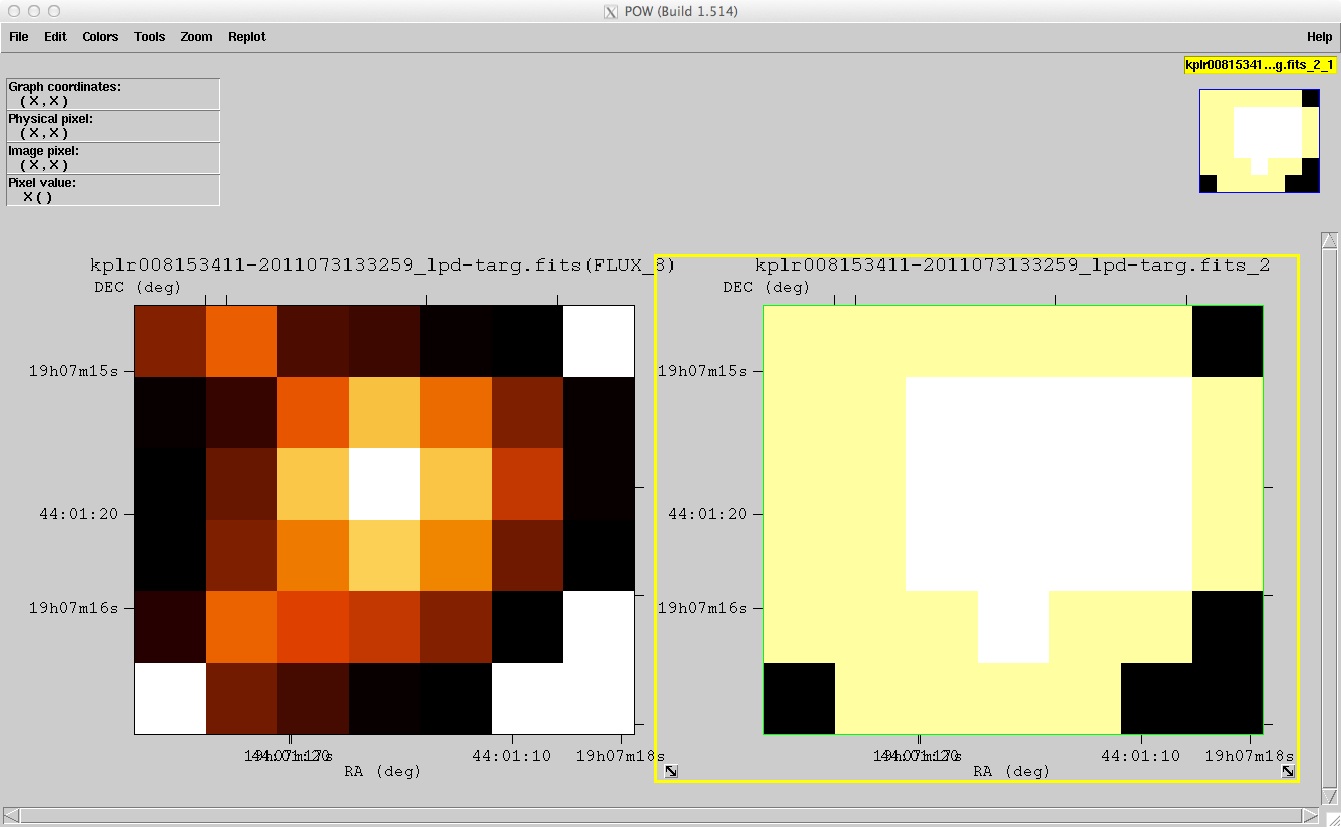|
Why does a really bright target need special handling?
Bright targets saturate the detector, resulting in charge bleeding. standard pixel masks are inefficient at capturing these targets because the default to the next largest pixel pattern in the lookup table onboard the spacecraft. This will be huge cover mostly background pixels around the targets and be wasteful with thousands of valuable pixels. Custom masks will also default to the next largest pixel pattern in the lookup table and the same problem occurs. The solution is to create a "dedicated mask". These are uploaded directly to the spacecraft lookup table and shaped precisely to match the shape of specific bright targets on the detector. An example is provided in figure 3. The two brightest accepted targets (green circles) in figure 2 were accepted as dedicated mask targets. Note the order of magnitude decrease in the required pixels compared to their standard mask sizes (red circles). The drawback to dedicated masks is that they consume valuable resources onboard the spacecraft. In order not to impact the pixel efficiency of the exoplanet survey, only 7 dedicated masks are commissioned each quarter. Dedicated masks are therefore a limited, very-competitive, resource. The results obtained so far from these bright sources has been spectacular.


Figure 3: Left - The quarter 4 Full Frame Image in the region of the saturated star RR Lyr (Kp = 7.9). This plot is a product of the FFI viewer KEPLERFFI. Right - The pixels captured by a dedicated mask placed over RR Lyr during quarter 8. Pixel value increases from blue to red. White pixels were not collected. This plot was created by the mask inspection tool kepmask.
The Kepler spacecraft does not have the onboard storage for 160,000 unique pixel masks. There is instead an onboard lookup table containing an optimal set of 1,024 unique pixel patterns.
Target pixel masks are assigned autonomously to be the smallest lookup mask which fully contains the required pixel set for a target. The brighter the target, the larger the pixel mask.
Dedicated masks will not be allowed for long cadence targets. Pixel inefficiency is a hit that will be absorbed into the long cadence pixel budget provided the science justification is a strong one.
Dedicated masks will be constructed for short cadence targets because the pixel inefficiency of standard masks is unacceptable to the short cadence pixel budget. Short cadence targets brighter than Kp = 8.0 will be considered a dedicated mask request.
The proposer need do no extra work for proposing bright targets. The construction of dedicated masks is performed by Kepler engineers during target management.
|




